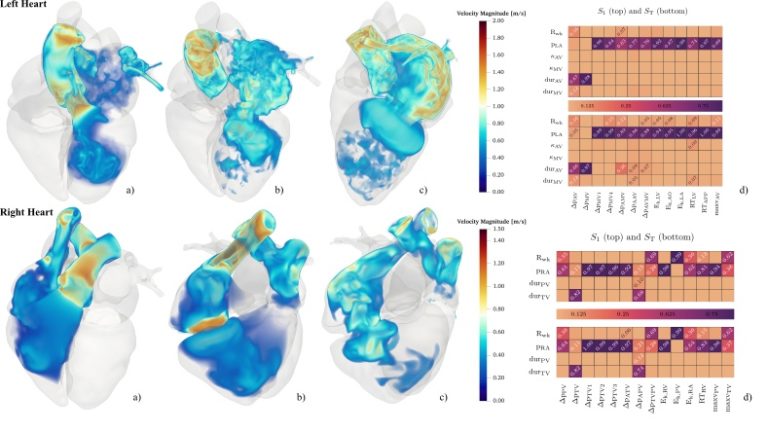Computational fluid dynamics (CFD) is used to assist in the development of artificial valves and surgical procedure design, focusing on local flow characteristics. Evaluating the impact on the overall function of the cardiovascular system or predicting longer-term outcomes, however, may require more comprehensive CFD models for the entire Heart. Fitting such models to patient data requires numerous computationally intensive simulations and depends on specific clinical measurements to narrow model parameters, making clinical application. Reduced order models (ROM) can help to speed up the fitting process while reducing while accounting for the additional uncertainties. In this work we present a fully validated patient-specific four-chamber cardiac CFD model based on the Navier-Stokes-Brinkman equations and test Gaussian process emulators (GPEs) as a potential ROM for performing variance-based global sensitivity analysis (GSA). The results of the GSA clearly identify atrial preload as the dominant factor influencing the flow in both the right and left hemispheres of the heart. Furthermore, we can identify differences between the left and right side in terms of vascular outflow resistances, with the pulmonary artery resistance having a much greater influence on flow than the Aortic Resistance. Our results suggest that GPEs can be used as ROMs to identify parameters in personalized whole-heart CFD models and underscore the importance of accurate preload measurements.

Global Sensitivity Analysis of Four Chamber Heart Hemodynamics Using Surrogate Models
Sign-in or become an IEEE member to discover the full contents of the paper.
